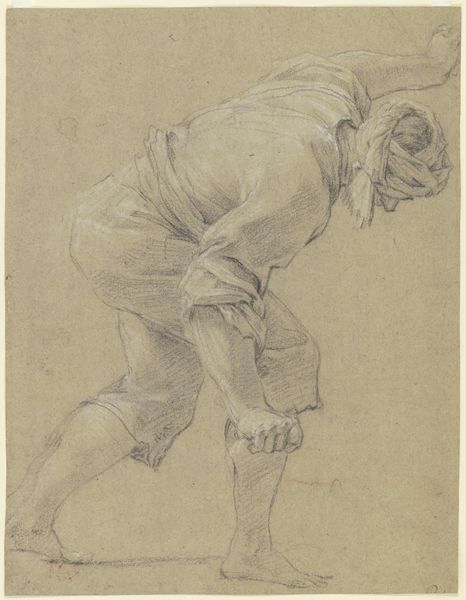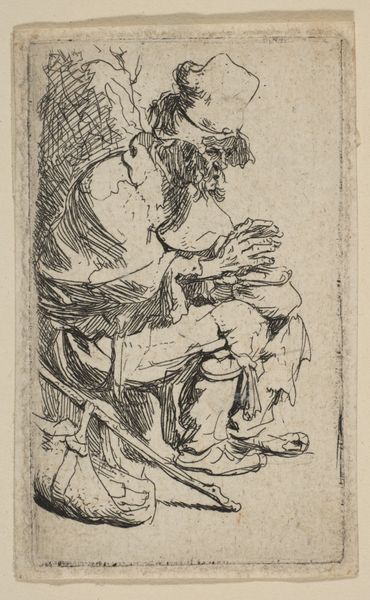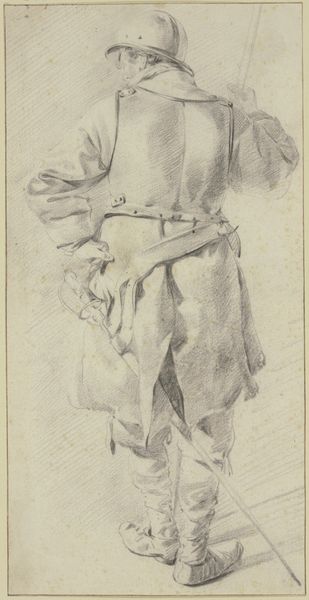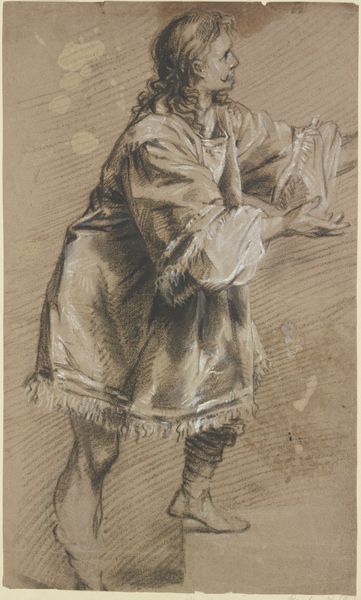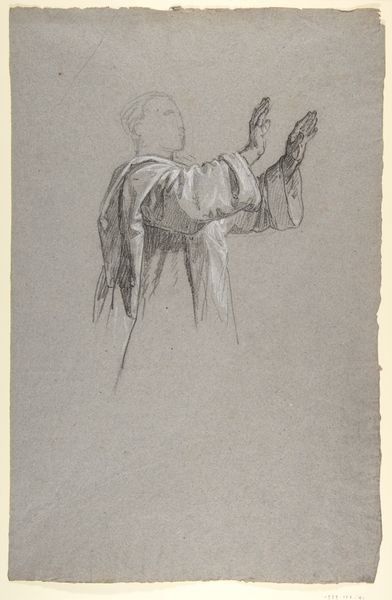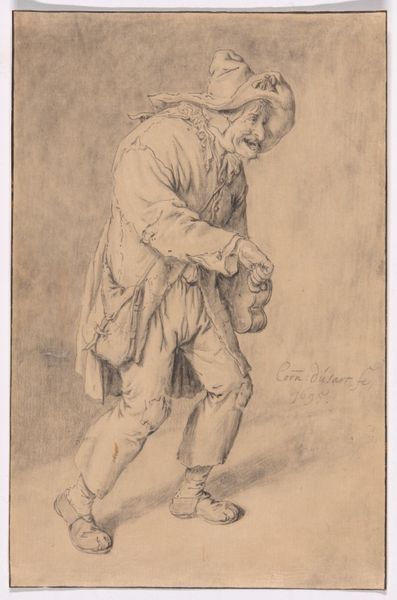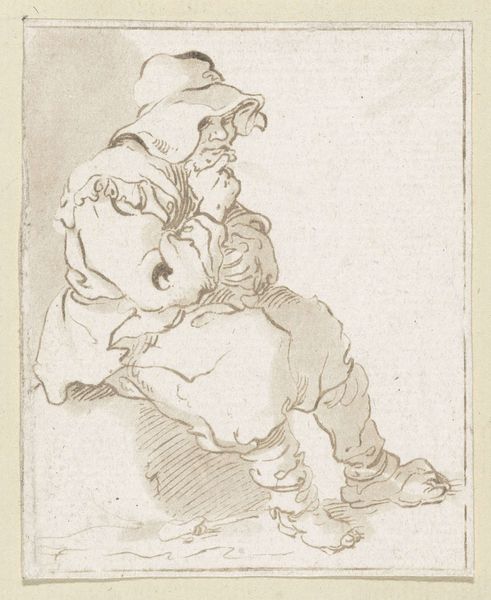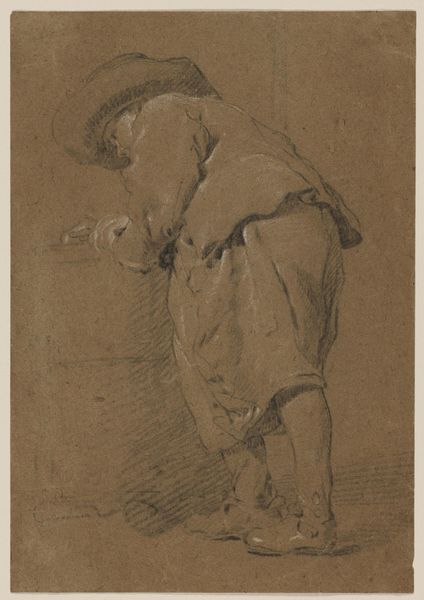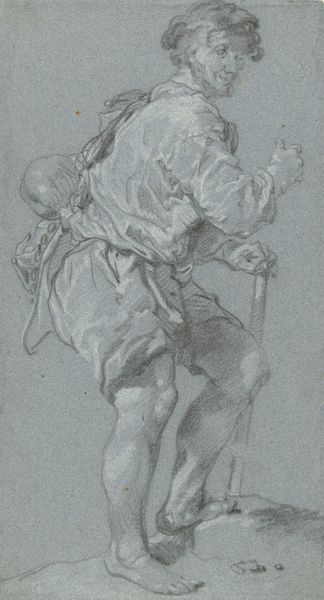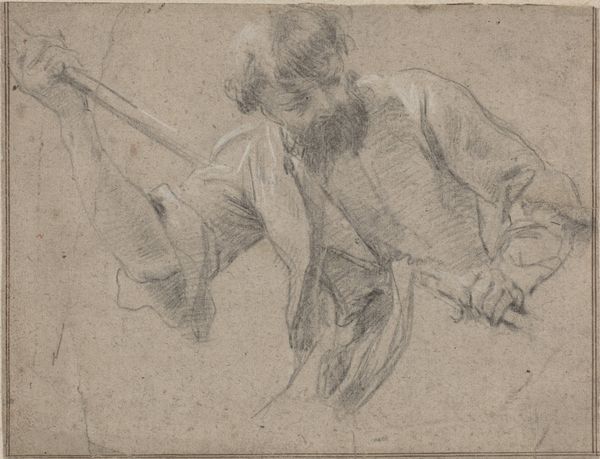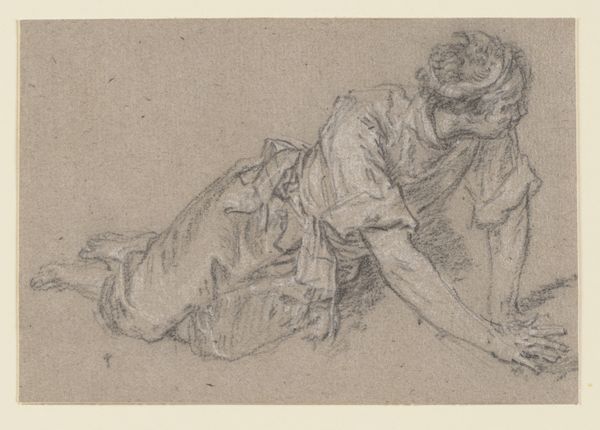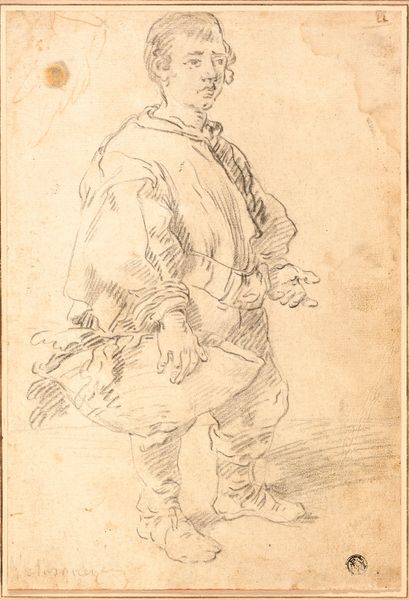
Vorgebeugt sitzender alter Mann mit Dreispitz, im Profil nach rechts c. 1771 - 1772
0:00
0:00
drawing, ink, graphite
#
portrait
#
pencil drawn
#
drawing
#
charcoal drawing
#
ink
#
pencil drawing
#
15_18th-century
#
graphite
#
portrait drawing
Copyright: Public Domain
Curator: I find myself drawn to this 1770s drawing by Georg Melchior Kraus: "Vorgebeugt sitzender alter Mann mit Dreispitz, im Profil nach rechts." It resides here at the Städel Museum, rendered in graphite, ink, and perhaps a touch of charcoal. What's your initial response? Editor: Immediately, a feeling of profound weariness settles over me. The figure is so slumped, almost defeated. Is he contemplating or simply succumbing to exhaustion? There's something really poignant here about age and perhaps marginalization given his humble attire. Curator: The down-turned gaze is so central, isn't it? A bent posture and averted eyes frequently signal introspection, mourning, perhaps even shame or resignation, a figure distanced from society. Notice too how Kraus emphasizes the sitter's hat – the Dreispitz. A seemingly confident emblem transformed by circumstance and style. Editor: Yes, I think the hat becomes particularly interesting as a historical marker. Once a symbol of authority during this period of revolution in Europe, here, atop this stooped figure, it almost feels ironic, highlighting a disconnect between societal power structures and individual realities. Who might this man have been, and what struggles led him here? Curator: I agree. Kraus captures an everyman type, not nobility, but someone perhaps swept up by forces beyond his control. The delicate, feathery strokes around the face hint at the passage of time, while the overall economy of the lines focuses our attention on the human form as symbol: both frail and persistent. There's a remarkable emotional subtlety within its simplicity. Editor: It reminds us, doesn’t it, of the hidden stories embedded in historical portraiture. Kraus encourages us to look beyond superficial markers of identity. The question I’m left with is this: in what ways do the societal factors during the artist's time directly contribute to the sitter's circumstances and psychological posture? What narratives are left out or still needing excavation? Curator: Indeed, an image ripe with implications that invite empathy while simultaneously inviting viewers to ask more and dig deeper in pursuit of what could be inferred by simply witnessing the image of someone struggling to face his circumstances. Editor: Beautifully said. Ultimately, art can only bring us a starting point and with historical context we are compelled to keep looking for connections that unite rather than divide us as human beings across different temporalities.
Comments
No comments
Be the first to comment and join the conversation on the ultimate creative platform.
